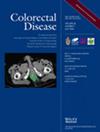Pelvic floor dysfunction is common and includes symptoms such as urinary incontinence, pelvic pain, faecal incontinence, obstructive defaecation syndrome symptoms and pelvic organ prolapse. It is investigated with defaecation proctography (DP) and integrated total pelvic floor ultrasound (TPFUS). Whilst DP is currently the gold standard, TPFUS is efficient and less invasive, offering additional sphincter function assessment. This study aimed to compare TPFUS accuracy to DP in the evaluation of pelvic floor dysfunction.
From 2015 to 2016, a prospective observational study was conducted at Guy's and St Thomas's Foundation Trust. Symptomatic women with incomplete evacuation were consecutively invited to participate. Patients underwent three scans using both TPFUS and DP. Reports were independently verified by a blinded consultant. Sensitivity, specificity and agreement were calculated for anatomical (rectocele, intussusception, enterocele, cystocele) and functional (coordination, evacuation) features.
A total of 216 patients were included. Moderate agreement was seen between DP and TPFUS in prediction of rectoceles (positive predictive value 85%, negative predictive value 67%, Cohen's kappa 0.46) and on the evaluation of dimensions of rectoceles (R coefficient 0.55) (P < 0.0001). Fair agreement was seen in the assessment of propulsion (positive predictive value 76%, negative predictive value 50%, Cohen's kappa 0.25). Poor agreement was observed on other anatomical and functional objectives.
This is the most extensive prospective comparison of these imaging modalities. While there is limited correlation between DP and TPFUS in exploring anatomical and functional aspects of pelvic floor disorders, TPFUS proves to be an effective screening tool. With enhanced expertise and confidence in its use, TPFUS could potentially guide surgical planning rather than solely identifying those needing DP.


